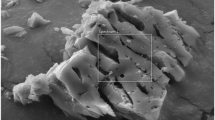Abstract
A laboratory study was conducted to determine the effects of degrees of pretreatment, types of activated carbons, dosages of activated carbons on the organic removal rates of potato processing wastewaters using the activated carbon adsorption process. Primary treated effluents, and secondary treated effluents using activated sludge and powdered activated carbon activated sludge processes were used as adsorbate in this study. Two types of activated carbon used consisted of granular activated carbon, Nuchar WV-L, and powdered activated carbon, Nuchar S-C, in dosages varied from 0.25 to 4 g per 50 ml of wastewater. Results indicated that activated sludge treatment removed 86–96% of COD from primary settled wastewaters. Activated sludge followed by activated carbon adsorption treatment removed 97% COD from primary settled wastewater with an effluent COD of 24 mg/1. Powdered activated carbon was more effective than granular activated carbon in removing COD from activated sludge treated effluents.
Resumen
Se llevó a cabo un estudio en laboratorio con el objeto de determinar los efectos de los diferentes grados de pretratamiento, tipos de carbones activados y dosificaciones de carbones activados sobre la remoción de material orgánica de las aguas residuales del procesamiento de papas determinándose asimismo, la intensidad de dicha remoción. Efluentes primarios y secundarios tratados con sedimento activado y también, sedimento activado en polvo, activado con carbón activado en polvo a manera de procedimientos, fueron sometidos a adsorción en este estudio.
Dos tipos de carbón activado usado consistieron en carbón activado granulado, Nuchar WV-L y carbón activado en polvo; Nuchar S-C varió en dosificaciones de 0.25 a 4 g. por 50 ml. de agua residual. Los resultados indicaron que el procedimiento en base a sedimento activado removió entre 86–96% del COD de aguas residuales asentadas.
El tratamiento con sedimento activado seguido por la exposición a adsorción por carbón activado, removió el 97% del COD de las aguas residuales primarias asentadas arrojando un COD efluente de 24 mg/1.
El carbón activado en polvo fue más efectivo que el carbón activado granular en la remoción COD en efluentes tratados con sedimento activado.
Similar content being viewed by others

Literature Cited
APHA 1976, Standard Methods for the Examination of Water and Waste-Water, Amer Public Health Assoc, New York.
Armstrong, T.D. and B.I. Boyko. 1969. Treatment of Potato Processing Wastes at Salada Foods Limited, Alliston, Proc. 16th Ontario Industrial Waste Conf, Niagara Falls, Ontario.
Dostal, K.A. 1969. Secondary Treatment of Potato Processing Wastes, EPA Water Pollut Control Res Series 12060 07/69.
Fossum, G.O., A.M. Cooley and G.D. Wahl. 1964. Stabilization Ponds Receiving Potato Wastes with Domestic Sewage, Proc. 19th Industrial Waste Conf, Purdue University, West Lafayette, Indiana, p. 96–111.
Hung, Y.T., L.I. Wang. 1981. Biological Treatment of Potato Processing Wastewaters, North Dakota Eng Exp Stn Rept No. 81-09-EES-03, Grand Forks, North Dakota.
Hung, Y.T. 1981. Feasibility of Activated Sludge Treatment of Potato Processing Waste-waters, Agric Wastes, 3:215–227.
Smith, D.W. and E.D. Brew. 1978. Treatment of Effluent from a Potato Processing Plant, J Water Pollut Control Fed 77:379–383.
Author information
Authors and Affiliations
Rights and permissions
About this article
Cite this article
Hung, YT. Treatment of potato processing wastewaters by activated carbon adsorption process. American Potato Journal 61, 9–22 (1984). https://doi.org/10.1007/BF02871290
Received:
Accepted:
Issue Date:
DOI: https://doi.org/10.1007/BF02871290



